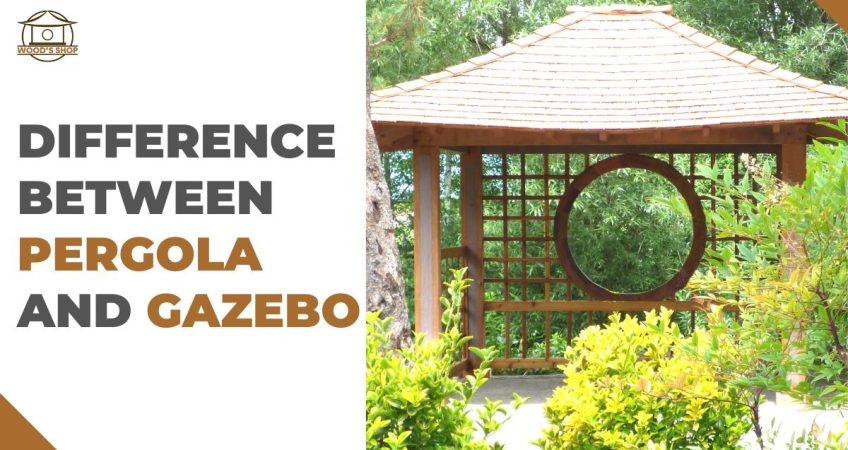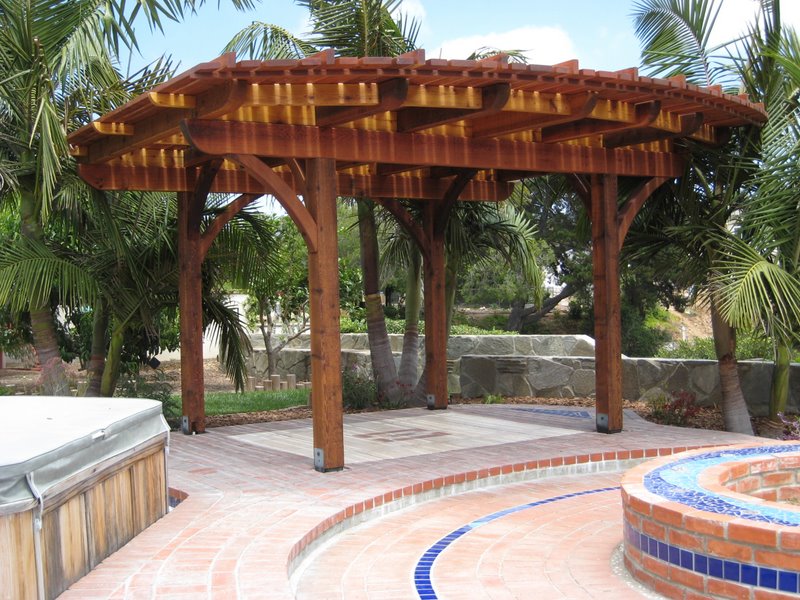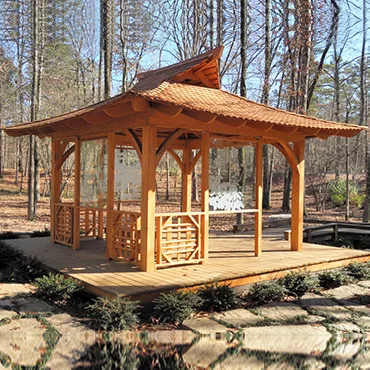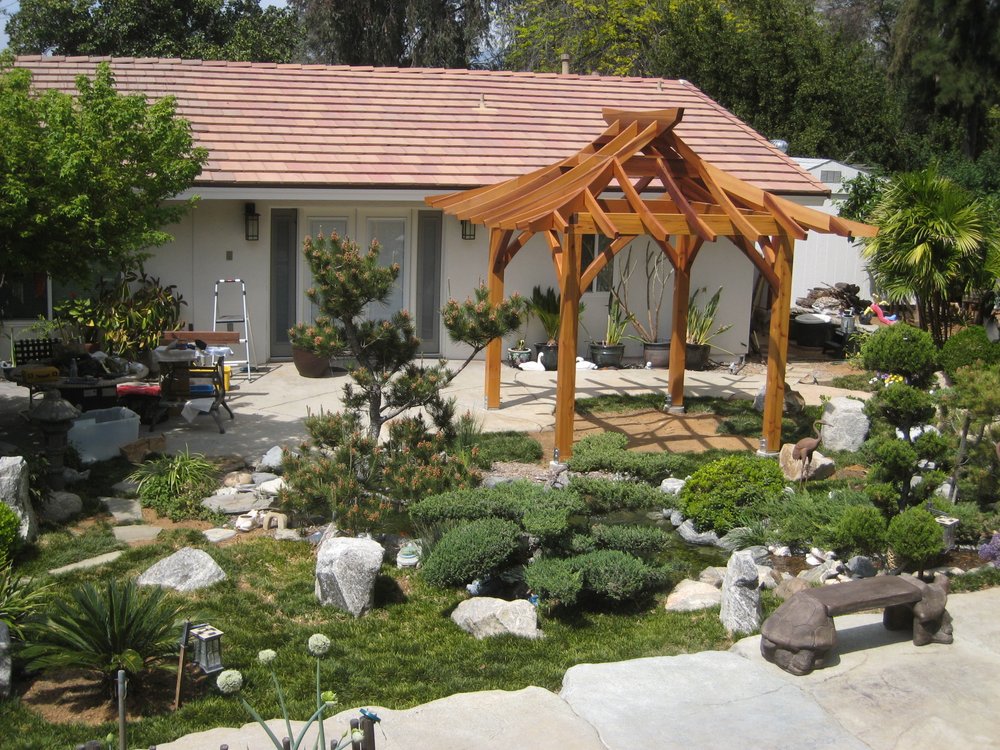Difference Between Pergola and Gazebo: Choosing the Perfect Outdoor Structure

Do you ever find yourself dreaming of a perfect outdoor oasis right in your backyard? A place where you can relax, entertain, and enjoy the beauty of nature? The key to realizing that dream lies in choosing the ideal outdoor structure. Whether it’s a pergola or a gazebo, selecting the right one can significantly enhance your outdoor living experience.
In this blog, we will explore the key differences between pergolas and gazebos, and delve into the critical factors you need to consider to make the perfect choice for your outdoor paradise. So buckle up and get ready for an exciting journey to the perfect outdoor structure for your home!
Understanding Pergolas
A pergola is a versatile outdoor structure that typically consists of a lattice framework supported by sturdy columns or posts. It is designed to support climbing plants, creating a beautiful, natural canopy of foliage. Originating from ancient Roman gardens, pergolas have a rich history and have been used for centuries as elegant garden features.

The key feature of a pergola is its open-air design, which allows a perfect blend of shade and sunlight. The overhead lattice can be customized to control the amount of sunlight filtering through, making it an ideal space for outdoor leisure activities and garden relaxation.
The benefits of incorporating a pergola into your outdoor space are numerous. Apart from enhancing the aesthetic appeal of your garden, pergolas provide a comfortable space for outdoor dining or relaxation, shielded from direct sunlight but still open to nature. They can also serve as a support structure for various climbing plants, transforming your outdoor space into a lush, green habitat. Furthermore, pergolas can significantly boost the value of your property, making them a worthwhile investment for homeowners.
Read More about DIY Pergola Kits.
Exploring Gazebos
A gazebo is a free-standing outdoor structure, often octagonal or circular in design, that provides an enclosed shelter, usually with a raised floor, and open on all sides. Gazebos have been a significant part of architectural history, often seen in parks, gardens, and public spaces, serving as bandstands, rain shelters, or ornamental features to enhance a landscape’s beauty.

Gazebos trace their origins back to ancient Egyptian and Roman times, where they were used as quiet retreats in gardens and courtyards. Over the centuries, the designs of gazebos have evolved, ranging from the simplistic, minimalist structures to elaborate, ornate designs influenced by various architectural styles, including Victorian, Asian, and Contemporary.
The advantages of incorporating a gazebo into your garden are manifold. One of the most notable benefits is that it provides a shaded, sheltered outdoor space, ideal for relaxing, dining, or entertaining, regardless of the weather conditions. Gazebos can also serve as a focal point in your landscape design, enhancing your garden’s aesthetic appeal. Moreover, like pergolas, gazebos can significantly increase the value of your property, making them a wise investment choice for homeowners.
Read more about DIY Wood Gazebo.
Key Differences
While both pergolas and gazebos offer unique benefits and aesthetic appeal, they differ significantly in design, functionality, and historical context. This section will delve into the key differences between these two outdoor structures, providing insights to help homeowners make informed decisions when choosing between a pergola and a gazebo for their garden or outdoor space.
Design Comparison
Pergolas and gazebos carry distinct architectural footprints. While pergolas predominantly feature a flat, unenclosed roof supported by columns or posts, gazebos are characterized by a roofed structure that’s open on all sides, often boasting a hexagonal or octagonal shape. Additionally, pergolas are usually an extension of a building, providing a shaded walkway, whereas gazebos stand independent, typically situated to take advantage of a view.
Materials
Both structures can be crafted from a variety of materials, each offering its unique aesthetic and durability. Common materials for pergolas include wood, vinyl, and metal. Wood, particularly cedar and redwood, is favored for its natural, rustic look, while vinyl and metal offer longevity and minimal maintenance. Gazebos, on the other hand, also utilize wood, vinyl, and metal, but may additionally incorporate stone or brick, especially in traditional or period-specific designs.
Functions
Pergolas primarily serve as an architectural feature that enhances an outdoor space and creates a comfortable area for relaxation or entertainment. They can also support climbing plants, creating a lush, green canopy. Gazebos, offering a more enclosed space, provide a sheltered outdoor area for dining or entertainment, regardless of the weather. They can also serve as an aesthetically pleasing focal point in a landscape design.
Choosing the Right Structure
Choosing between a pergola and a gazebo depends largely on your space availability, intended use, and personal preferences. If you have a large, open area and desire a structure that offers greater coverage and privacy, a gazebo may be the right choice. Its stand-alone nature allows it to serve as a distinct focal point in your landscape.
On the other hand, if your space is limited or you want a structure that seamlessly integrates with your house or deck, a pergola would be an ideal choice. Perfect for supporting climbing plants, pergolas can create a natural, shaded walkway or relaxation area.
Consider your intended use as well. If you want a sheltered area for outdoor dining or entertaining that’s not affected by the weather, then a gazebo, with its enclosed space, would be preferable. If you’re looking for an architectural feature to enhance your outdoor space and provide a framework for plants, a pergola would be more suitable.
Lastly, your personal preferences in terms of aesthetics and maintenance will guide your decision. Materials used for both structures vary, each offering its unique look and durability. If you prefer a rustic look, you might opt for wood, either for a pergola or a gazebo. For longevity and minimal maintenance, vinyl or metal would be the best choices.
Remember, the right structure for you is the one that meets your needs and complements the style of your home and landscape. Take the time to consider each factor and envision how each structure will work in your space. This will help ensure that you make the right choice and enjoy your outdoor living space for many years to come.
Installation and Costs
The decision between installing a gazebo or a pergola depends on various considerations like space availability, intended use, aesthetics, and maintenance requirements. Both structures provide unique benefits and can enhance your outdoor living space, but your personal needs and home’s style will guide your final choice.
Installation Process
The installation process for both pergolas and gazebos is somewhat similar but varies in complexity. Installing a pergola can be a simple DIY project, especially when using a kit. It typically involves setting the posts, mounting the beams, and attaching the rafters. However, if you opt for a custom-built pergola, professional installation might be required.
On the contrary, gazebos are usually more complex structures. They often feature a fully enclosed roof, optional walls, and can be octagon or oval in shape. Such intricacies often necessitate professional installation, which may include site preparation, laying a foundation, and constructing the gazebo.
Costs
Costs for pergolas and gazebos also vary significantly, depending on the materials used, size, and whether you choose a DIY kit or a custom build. For pergolas, costs can range from $500 for a basic, small kit up to $5,000 or more for a large, high-quality, custom-built structure. This price includes materials but may not include labor if you opt for professional installation.
Gazebos tend to be more expensive due to their complexity. You can expect to pay from $1,500 for a basic kit to over $10,000 for a large, top-of-the-line, custom-built gazebo. Costs can also increase if site preparation or foundation laying is needed. Remember, labor costs will significantly bump up the total price if you choose to have a professional build your gazebo.

Enhancing Your Outdoor Space
Both pergolas and gazebos can drastically enhance the aesthetic appeal of your outdoor space, providing not just shade and shelter, but also a unique focal point for your garden or patio.
To truly elevate your pergola, consider incorporating climbing plants such as roses, ivy, or grapevines, which can add a splash of natural color and provide additional shade. Hanging pots or lanterns can also add a charming touch. Strategically placed outdoor lighting, such as fairy lights or solar-powered lanterns, can make your pergola a magical spot for evening relaxation.
Gazebos, on the other hand, offer a more traditional and elegant look. You can enhance their appeal by adding outdoor curtains or drapes for added privacy or to block sunlight. Consider dressing the interior with weather-resistant furniture to create a cozy outdoor living room. Landscaping around your gazebo with flower beds or shrubs can also help tie it into the rest of your garden. As for lighting, consider installing a hanging light fixture for a classy look, or string lights for a more casual, festive atmosphere.
Remember, the goal is to create an outdoor space that reflects your personal style, offers comfort, and blends in seamlessly with the rest of your property. With a bit of creativity and planning, pergolas and gazebos can truly transform your backyard into a personal paradise.
Read More: Savor the Outdoors with an Outdoor Kitchen Gazebo
Conclusion:
Pergolas and Gazebos, while both adding aesthetic value and functionality to your outdoor spaces, present unique features that distinguish one from the other. Pergolas, with their open design and climbing plants, create a relaxing, breezy atmosphere, making them perfect for lounging or entertaining in the daytime. Gazebos, on the other hand, offer a more formal and private space, with the potential for drapery and interior furnishings, turning them into enclaves of comfort and elegance, ideal for both day and night use. The choice between a pergola and a gazebo should be guided by your specific requirements, style preference, and the existing layout of your property.
In the end, whether you choose a pergola or gazebo, remember that your outdoor space is an extension of your home, and as such, it should resonate with your personality and lifestyle. At Wood’s Shop, we are dedicated to helping you make an informed decision and creating the outdoor retreat you’ve always desired.
Frequently Asked Questions
1. What are the key differences between pergolas and gazebos?
Pergolas and gazebos both add aesthetic value and functionality to your outdoor spaces but have unique features. Pergolas have an open design with climbing plants, creating a relaxing, breezy atmosphere. Gazebos offer a formal and private space with potential for drapery and interior furnishings, making them enclaves of comfort and elegance.
2. How do I choose between a pergola and a gazebo for my backyard?
The choice between a pergola and gazebo should be guided by your specific requirements, style preferences, and the existing layout of your property. If you prefer a relaxing, open space, a pergola may be best. If you want a more private, formal setting, a gazebo may suit your needs.
3. Can Wood’s Shop help me decide between a pergola and a gazebo?
Yes, at Wood’s Shop, we are dedicated to helping you make an informed decision and creating the outdoor retreat you’ve always desired. We can provide advice based on your personal requirements, style, and the current layout of your property.